Travel is more than just getting from one place to another. For many women, it’s an opportunity to showcase their personal style while embracing the adventure that lies ahead. Crafting the perfect travel look can be a fun and empowering experience, especially when it strikes the right balance between comfort, practicality, and chic elegance. Whether you’re walking through the airport or exploring your destination, here are some feminine travel looks guaranteed to make you feel fabulous on your journey.

When it comes to traveling by air, comfort is key, but that doesn't mean you have to sacrifice style. One phenomenal option is to opt for mini dresses for women. A well-chosen mini dress can offer the perfect amalgamation of sophistication and ease. Look for dresses made from soft, breathable materials like cotton or jersey, as they will keep you comfortable throughout the flight. Paired with a cozy cardigan or an oversized scarf that can double as a blanket, this outfit not only looks great but also provides versatility.
Layering is an essential aspect of travel fashion. Flights can be unpredictable when it comes to temperature, and you want to be prepared for different climates upon arrival. Start with a lightweight base layer such as a fitted tee or tank top. Add a stylish oversized sweater or a structured blazer for added warmth and flair. For pants, consider stretchy leggings or well-fitted jeans that offer a balance of comfort and style. Complete your look with ballet flats or ankle boots that are easy to slip on and off during security checks.
Outerwear plays a crucial role in travel attire, especially during the colder months. A trench coat is a timeless piece that adds a touch of sophistication to any look. It’s ideal for transitional weather and can be worn over both casual and more dressed-up outfits. Another excellent choice is a stylish leather jacket; it’s both practical and trendy. For those who prefer softer materials, a wool coat in a neutral shade can offer both warmth and elegance.
Accessories can make or break your travel look. Choose pieces that enhance your outfit without overwhelming it. A stylish yet practical tote bag is a must-have. Look for one with multiple compartments to keep your essentials organized. A chic hat can also add a fashionable touch while protecting your face from the elements. Scarves are another versatile accessory; they can be used as a blanket, a cover-up, or simply as a statement piece.
Footwear is arguably one of the most important aspects of travel fashion. You want something that is both comfortable for long periods of walking and stylish enough to complement your outfit. Slip-on sneakers or loafers are excellent choices as they offer comfort and are easy to remove during airport security checks. For a bit more elegance, consider low-heeled ankle boots. They provide a bit of lift without sacrificing comfort.
One of the challenges of travel fashion is ensuring your look can easily transition from day to night. Opt for dresses and accessories that can adapt to both casual daytime activities and evening outings. A well-fitted midi dress paired with a denim jacket and flats is perfect for daytime adventures. Swap the flats for heeled sandals and add statement jewelry for a sophisticated evening look without the need to carry extra outfits.
Traveling can take a toll on your skin, so a minimal yet effective beauty routine is essential. A good moisturizer, lip balm, and a tinted sunscreen can keep you looking fresh throughout your journey. For a touch of glamour, carry a few multi-purpose makeup products such as a tinted lip and cheek balm and a travel-sized mascara.
To ensure your travel fashion is both functional and fashionable, always plan your outfits ahead of time. Consider the activities you’ll be doing and the weather conditions of your destination. Invest in pieces that are versatile and can be mixed and matched to create various looks. Most importantly, choose outfits that make you feel confident and comfortable, allowing you to enjoy your adventure to the fullest.
From airport to adventure, the right travel wardrobe can be a game-changer. With these stylish and feminine travel looks, you’ll be prepared to make a chic statement wherever your journey takes you. Bon voyage!
Planning an off-road adventure is exciting, but ensuring your vehicle is up to the task is paramount. Whether you’re navigating rocky trails, sandy dunes, or muddy paths, a well-maintained vehicle can make the difference between a memorable trip and a disastrous one. This guide will outline crucial maintenance tasks you should perform on your vehicle before hitting the rough terrain, emphasizing the importance of preparation for a safe and enjoyable journey.

Fluids are your vehicle's lifeblood, and ensuring they are at optimal levels and in good condition is essential. Start with the engine oil. Off-road driving can be strenuous on the engine, so fresh, high-quality oil is crucial for smooth operation and longevity. If it’s been a while since your last oil change, now is the time to replace it.
Next, check the transmission fluid, which is vital in keeping your vehicle's transmission running smoothly, especially under the stress of rough terrain. Low or dirty transmission fluid can lead to overheating and significant damage. Similarly, examine the brake fluid. Properly functioning brakes are non-negotiable for any vehicle, but even more so when navigating unpredictable terrain.
Remember the coolant. Your engine will work harder on rough trails, making it prone to overheating. Ensure the coolant level is sufficient, and the fluid is in good condition. Lastly, check the power steering fluid. Maneuvering through tough terrain requires precise steering control, which depends on having adequate and clean power steering fluid.

Tires are your direct contact with the terrain; their condition is critical for safety and performance. Start by inspecting the tread depth. Off-road conditions demand deep treads to provide the necessary grip and traction. If the treads are worn, it’s time to invest in new tires, preferably all-terrain or mud-terrain types designed specifically for rough conditions.
Examine the tire sidewalls for cuts, cracks, or bulges, as these can lead to blowouts in challenging conditions. Ensure the tires are properly inflated according to the manufacturer’s recommendations. Underinflated tires can cause poor handling and increased wear, while overinflated tires can be more susceptible to damage from sharp rocks and other obstacles.
Don’t overlook the spare tire. Ensure it is in good condition and properly inflated. A flat tire can be more than just an inconvenience in remote locations—it can be a major safety hazard.
Your vehicle’s braking and suspension systems are crucial for handling the rigors of off-road driving. Begin by thoroughly inspecting the brake pads and rotors. Worn brake pads can significantly reduce stopping power, while damaged rotors can lead to brake failure. Replace any components that show signs of excessive wear.

The suspension system is equally important, absorbing the shocks and impacts from uneven terrain. Check the shock absorbers and struts for leaks or damage. Worn suspension components can lead to poor handling and increased discomfort, making your journey more challenging and less enjoyable.
Belts and hoses are often overlooked but are vital to your vehicle’s performance, especially in harsh conditions. Inspect all belts, including the serpentine belt, for signs of wear, cracking, or fraying. A broken belt can lead to engine failure, stranding you in a remote location.
Similarly, examine all hoses for leaks, cracks, or bulges. Pay particular attention to the radiator and heater hoses, as these are crucial for preventing engine overheating. Replace any belts or hoses showing deterioration signs to avoid unexpected breakdowns.
A reliable electrical system is crucial for starting your vehicle and powering essential accessories. Begin by testing the battery. Check the terminals for corrosion and ensure they are securely connected. If your battery is over a few years old, consider replacing it to prevent the risk of a dead battery in a remote area.
Test all lights, including headlights, taillights, brake lights, and turn signals. Visibility is key to safety, especially when navigating unfamiliar terrain. Ensure that all lights are functioning correctly and replace any burnt-out bulbs.
Even with meticulous maintenance, preparing for unexpected situations is essential. Pack an emergency kit with a first aid kit, a fire extinguisher, a flashlight with extra batteries, basic tools, and a tire repair kit. Additionally, carry extra fluids such as oil, coolant, and brake fluid, as well as a portable air compressor for tire inflation.
Including a recovery kit is also a wise decision. This should include a tow strap, a jack, and a shovel. If you get stuck, these tools can be invaluable in getting you back on track.
Taking the time to thoroughly maintain and prepare your vehicle before an off-road adventure is an investment in safety, reliability, and enjoyment. By following these essential maintenance tips, you can minimize the risk of breakdowns and ensure your vehicle is ready to tackle the challenges of rough terrain. A well-maintained vehicle enhances your off-road experience and provides peace of mind, allowing you to focus on the thrill of the journey and the beauty of the remote landscapes you’re exploring.
There's a certain magic to long-distance bike tours. The rhythmic whir of your pedals, combined with the comfort of Cycling Apparel from Sigr, blends with the sights and sounds of ever-changing landscapes.
It's a chance to challenge yourself, explore hidden gems, and forge a deep connection with the world around you. However, you will need to be well-prepared before going on tour, and having the right cycling apparel is a crucial element of that.

Long-distance bike tours typically last several days to weeks or months and can cover distances of 50 to 100 miles (80 to 160 kilometers) per day. That’s why choosing the right cycling apparel is crucial, just like picking the perfect bike for your needs.
It can impact how freely you move, how protected you are from the weather, and even your confidence in the saddle. Think of your cycling clothes as an extension of your bike.
You need more than good-looking clothes. You need clothes that mesh functionality, comfort, and even safety.
Discover essential cycling apparel for long-distance bike tours! This informative article covers must-have gear, from moisture-wicking clothing to padded shorts. Stay comfortable and enhance your performance with expert tips. Remember to invest in a hydration pack for mountain biking to ensure you stay hydrated on challenging trails. Equip yourself with the right apparel and accessories for an enjoyable and successful biking adventure.
Conquering a long-distance bike tour requires apparel that prioritizes comfort and performance. Be on the lookout for these features to ensure you are ready for anything during your ride.
Long hours on the saddle will lead to plenty of sweating. This makes breathability and moisture-wicking properties essential. Look for jerseys and shorts made from technical fabrics that keep you dry and comfortable by wicking away sweat. This helps prevent discomfort and keeps you focused on your ride.
Apparel that fits well is crucial for avoiding chafing and discomfort. Opt for clothing with ergonomic designs and flatlock seams to reduce friction and enhance comfort during long rides. Proper-fitting gear minimizes friction and prevents chafing for extended periods, ensuring a pain-free ride.
Long-distance tours will put your gear through rigorous conditions. Look for gear made from durable materials, such as reinforced stitching and abrasion-resistant fabrics. Investing in high-quality cycling apparel will pay off in the long run.

Choose apparel that can adapt to different weather conditions and terrains. Versatile clothing means less packing and more efficiency. Layerable clothing helps you prepare for a range of conditions, from hot sunny days to cool rainy weather.
Picking up budget-friendly gear might seem tempting, but remember, you get what you pay for. High-quality cycling apparel is an investment. It lasts longer, performs better, and ultimately enhances your entire riding experience.
Weather conditions can vary dramatically during a bike tour, especially if your route takes you through different regions and elevations.
Mastering the art of layering will help you stay comfortable and prepared for any climate.
The base layer is your first line of defense against the elements. It should be snug-fitting and made from moisture-wicking material to keep sweat away from your skin. This layer helps regulate your body temperature, keeping you cool in the heat and warm in the cold.
The mid-layer provides insulation and retains body heat. Depending on the weather, you might choose a lightweight jersey for warmer days or a thermal long-sleeve top for cooler temperatures. Choose a mid-layer that is breathable yet capable of trapping warmth to keep you comfortable during cooler rides.
Jackets are essential for any road, gravel, or MTB cyclist. They keep your core comfortable when the weather changes. A good cycling jacket should be windproof, waterproof, and breathable.
Choose from softshell, wind, pack, and rain jackets to handle different conditions. A weather-appropriate jacket can significantly enhance your ride.
The following items will ensure comfort, protection, and performance on your journey.
Cycling gloves provide essential padding to reduce pressure on your hands and wrists and prevent numbness and discomfort. They will also improve your grip and protect your hands in case of a fall.
Choose gloves that are appropriate for the weather, with lightweight options for warm weather and insulated versions for colder conditions.
Cycling jerseys are designed for long days in the saddle. Made with high-performance fabrics, they offer excellent moisture management and a comfortable, close-to-body fit. Look for features like breathable mesh panels, reflective accents for better visibility, and ample storage pockets for essentials.
Padded cycling shorts and tights feature a built-in, high-density chamois to prevent chafing and saddle sores. A chamois pad, also called a seat pad, is a padded insert sewn into the crotch area of cycling shorts or bibs. It is made of foam with different densities, wicks moisture, and feels soft against your skin.
Long rides are all about comfort, and that includes your legs. Leg warmers are lightweight and can be easily stored in a jersey pocket when not needed. They offer extra warmth for your legs without restricting your pedaling motion and are perfect for cooler mornings or higher altitudes.
The right cycling shoes can greatly enhance your performance and comfort. Touring cyclists often prefer shoes that are comfortable for walking. Look for shoes with stiff soles for efficient pedaling and a walkable tread pattern for off-bike exploration.
Sun protection is crucial for long days on tour. UPF-rated arm sleeves and headwear will shield you from harmful UV rays and keep you cool. Cycling caps offer additional protection against the sun and rain. They are essential for staying comfortable and safe during long-distance bike tours.
A helmet is a must for any long-distance bike tour. It protects your head in case of falls or accidents. Choose one that fits well, feels comfortable, and has enough ventilation to keep you cool.
Always make sure your helmet meets safety standards.
Long-distance bike tours can extend into the evening, depending on the distance between your stops. Wearing a reflective vest or gilet helps you stay visible and safe, especially if your route includes roads shared with cars.
It has reflective material that helps cars and other vehicles see you easily in low-light conditions—like early mornings or evenings.
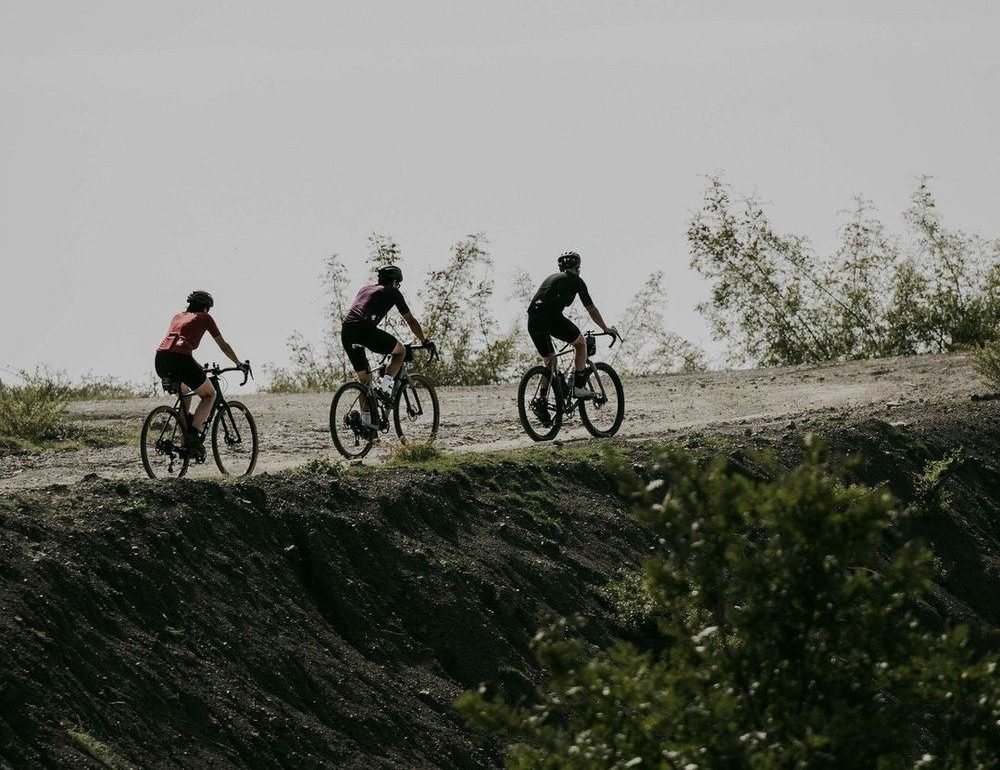
Long-distance bike tours are about pushing your limits, soaking in new sights, and making memories that last a lifetime. So ditch the worries about chafing, overheating, or feeling ill-equipped—invest in quality cycling apparel. Gear up and get ready to hit the road!
More and more people are heading towards the comfort and convenience of private planes, which offer fewer interruptions and more privacy in their travel plans. International airports are getting busier every day, and so are people. We’ll let you in on a secret: These trending airports do not seem so busy if you are not there to catch a commercial flight. We bring you a list of airports that will make it to the top choices of people traveling the world this year. With an adjustment to your mode of travel, you can enjoy the attractions of each port without losing your flight or getting stuck in security lines. But beware — you might end up loving it too much to ever fly commercial again.

The Singapore airport also hosts a yearly workshop called ‘Enchanted Night at Changi Experience Studio’s Holiday Camp.’ It provides you and your kids the experience of a lifetime with arts and crafts and welcomes you for a magical sleepover. If interested, you can taste the fun at this June workshop.
Home to Oryx Airport Hotel, the airport is also thoughtful about its passengers. You can enjoy some spa time, a game of squash, or dive into an 82-foot swimming pool. There is so much to do at the airport that it can almost make anyone way too excited for the adventures of Qatar itself.
Narita Airport hosts many art exhibitions for people traveling to Japan. One of the best things about art is that you can tell a lot about people just by looking at what they create. You can also taste authentic delicacies at the airport, keeping the excitement of exploring a new space alive.
The airport serves the capital of Colombia, Bogotá. One of the most pleasing features of this International Airport is its lactation booths. These are available to all lactating mothers and offer a comfortable, safe, and hygienic space to feed their babies.
The Parisian DNA also comes across in the food, concerts, intimate music settings, and the airport's duty-free store. Charles de Gaulle Airport is a commotion of French culture, especially now that the Olympics are nearing.
Events like the G20 in India (2023) or the Paris Olympics (2024) tend to attract huge crowds. Services can often slow down, causing emotional anguish to a passenger tired from a long series of flights. So why not stand out and opt for a private jet hire? Let’s see how they can elevate your experience.
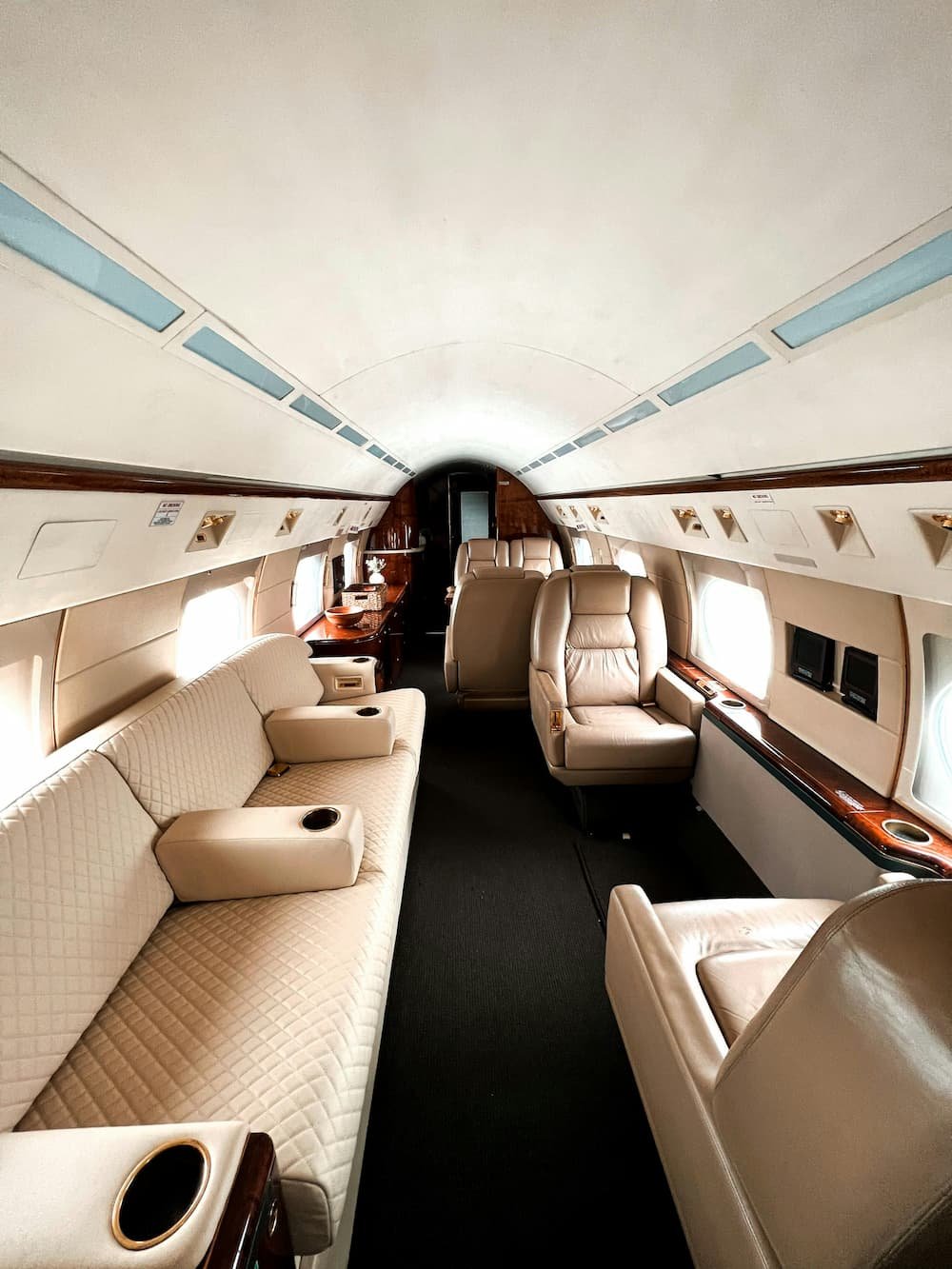
On a commercial flight, you will likely sit with a stranger, but when you fly a private jet charter, you get to pick your fellow passengers in the aircraft. The latter promises you complete privacy.
Many people find it easier or ideal to work when flying. Flying in a private jet offers you amenities like onboard Wi-Fi, with enough speed to carry out essential functions like sending emails and having meetings. Commercial flights' lack of privacy and space might constrict you from executing work practices.
Space is another factor, interdependent on privacy and productivity. Usually, commercial flights have dedicated time slots for using the lavatory, and passengers are only allowed to move within the cabin's space. However, with a private plane rental, passengers can choose the aircraft size and have free reign to move around.
Both commercial and private flights provide first-class amenities to their passengers. However, the latter is more luxurious. While light beverages and pre-prepared meals are included with your tickets on a commercial flight, on a private jet charter, you can order your favorite meal with beverages of your choice. Furthermore, if it's a long-distance flight, you can stretch out on the couch — yes, private jets can be a lounge in the sky if you’re looking for such an experience.

This guide covers some of the incredible benefits of flying privately. However, let us know if you think we should have mentioned your favorite part of traveling in a private plane rental. It might make it onto our next list of the luxurious perks of private aviation.
When packing for a trip, choosing versatile and stylish clothing is key to maximizing your suitcase space and looking fabulous throughout your journey. One wardrobe staple that has proven its worth time and again is wide leg jeans. These jeans offer a perfect blend of comfort, style, and adaptability, making them a must-have item for any woman's travel wardrobe.

First and foremost, wide leg jeans for women provide exceptional comfort, a crucial factor when you're on the go. Whether you're exploring a new city, embarking on a long-haul flight, or simply strolling through local markets, wide leg jeans for women ensure you stay comfortable and chic. Their loose fit allows for unrestricted movement, reducing the risk of discomfort and chafing, which is often a concern with tighter jeans or pants.
Additionally, the relaxed silhouette of wide leg jeans provides excellent ventilation, keeping you cool in warmer climates and preventing that sticky, uncomfortable feeling during your travels.
Another reason why wide leg jeans are perfect for travel is their incredible versatility. These jeans effortlessly transition from day to night, making them ideal for a range of activities and occasions. During the day, pair them with a simple t-shirt and sneakers for a casual, laid-back look perfect for sightseeing or exploring local attractions.
As the evening approaches, swap the t-shirt for a stylish blouse and add some statement jewelry to instantly elevate your outfit for a dinner date or a night out on the town. The adaptability of wide leg jeans allows you to create multiple stylish looks with minimal effort, reducing the need to pack excessive clothing items and saving valuable suitcase space.
Wide leg jeans also offer a flattering fit for various body types, enhancing their appeal as a travel essential. The high waist and wide cut elongate the legs, creating a sleek and elegant silhouette that complements different figures.
This universally flattering design boosts confidence, ensuring you feel your best whether you're posing for travel photos or mingling with locals. The wide leg style also balances proportions, making it a great choice for those looking to highlight their waist while providing a comfortable and stylish alternative to skinny jeans or tighter pants.
One of the best features of wide leg jeans is their ease of styling. They pair well with a wide range of tops, from casual t-shirts and tank tops to more formal blouses and sweaters. This flexibility means you can mix and match your travel wardrobe effortlessly, creating numerous outfits with just a few key pieces. Additionally, wide leg jeans can be dressed up or down with the right accessories, making them suitable for various settings, from beachside cafes to upscale restaurants.
Wide leg jeans are also practical for different climates, making them a versatile addition to your travel wardrobe. In warmer weather, their loose fit provides breathability, helping you stay cool and comfortable. For cooler climates, they can easily be layered with tights or thermal leggings underneath, offering added warmth without compromising style. This adaptability ensures that wide leg jeans remain a reliable choice, regardless of your travel destination.
In conclusion, wide leg jeans are a fantastic item to pack for any trip, offering a perfect combination of comfort, versatility, and style. Their ability to adapt to various activities, climates, and occasions makes them an invaluable addition to any woman's travel wardrobe. So, the next time you're preparing for an adventure, be sure to include a pair of wide leg jeans in your suitcase – your future self will thank you!
Are you a culinary adventurer with an insatiable appetite for exploring the world's flavors? If so, then you're in for a delectable treat on an Italy food tour! Food tours have emerged as the ultimate playground for foodies, offering a tantalizing array of benefits that go far beyond just filling your belly. From savoring mouthwatering dishes to immersing yourself in local culture, join us as we embark on a delectable journey through the top 10 reasons why food tours are a must for culinary enthusiasts like you.
Food tours offer culinary adventurers, including those interested in Amalfi Coast cooking vacations, a unique opportunity to explore the diverse and delicious flavors of a region. Whether you're in a bustling city or a quaint countryside, these tours take you on a gastronomic journey that showcases the essence of the local cuisine. From savoring street food delicacies to indulging in gourmet dishes, you'll get to taste dishes that you might not have discovered on your own. It's a chance to tantalize your taste buds with a wide range of flavors, from spicy and savory to sweet and tangy, providing a true sensory delight that will leave a lasting impression.
One of the most enriching aspects of food tours, such as cooking tours in Tuscany, is the immersive cultural experience they offer. These tours go beyond just eating; they provide insight into the culture, history, and traditions of the region. You'll often visit local markets, interact with chefs and artisans, and even see how certain dishes are prepared. This deep dive into the culinary culture of a place allows you to connect with the locals and gain a better understanding of their way of life. You'll not only taste the food but also learn about the stories and customs that make each dish special, making for a truly memorable and educational experience.

Food tours Sorrento, Italy are led by passionate and knowledgeable local guides who are often food enthusiasts themselves. These guides are well-versed in the culinary scene of their area and can provide you with insider insights that you wouldn't get from a regular tourist experience. They can recommend the best dishes, share the history behind each food item, and even introduce you to the chefs and vendors who create these delectable treats. With their expertise, you'll gain a deeper appreciation for the food you're enjoying, and you'll have the opportunity to ask questions and engage in meaningful conversations about the local cuisine.
One of the joys of going on a food tour is the chance to uncover hidden gems and local favorites that may not be well-known to outsiders. While popular restaurants and dishes have their merits, food tours often take you off the beaten path to tucked-away eateries, street vendors, or family-owned establishments that locals cherish. These hidden culinary treasures offer a more authentic and genuine taste of the region's food culture. You'll have the satisfaction of knowing that you've discovered something truly special and can savor the pride and passion that goes into these lesser-known culinary delights.

Food tours are a feast for the senses, offering a delightful variety of tastes in a single outing. Instead of committing to just one restaurant or cuisine, these tours allow you to sample a diverse range of dishes all in one go. This variety is particularly appealing for culinary adventurers who love to experiment with new flavors and textures. From appetizers to main courses and desserts, you'll have the opportunity to savor a multitude of flavors, making each tour a gastronomic adventure that keeps your taste buds excited and satisfied throughout the experience.

Food is often intertwined with a region's history and traditions, and food tours provide a fantastic opportunity to learn about this rich culinary heritage. As you explore different food stops, guides frequently share captivating stories and anecdotes about the origins of dishes, the evolution of cooking techniques, and the cultural significance of various ingredients. This educational aspect of food tours adds depth to your culinary adventure, helping you appreciate not only the flavors but also the historical and cultural context behind each bite. It's like taking a journey through time, one delicious morsel at a time, and gaining a deeper understanding of the food's significance in the local culture.
Food tours play a vital role in supporting local businesses and artisans within the culinary community. By participating in these tours, you contribute directly to the livelihoods of small restaurants, food vendors, and local producers. These businesses often rely on tourism and food enthusiasts to thrive. Your patronage helps preserve and promote traditional recipes, food craftsmanship, and family-owned establishments, ensuring that these culinary traditions are passed down to future generations. It's a rewarding feeling to know that your gastronomic adventure is not only satisfying your taste buds but also making a positive impact on the local economy and culture.
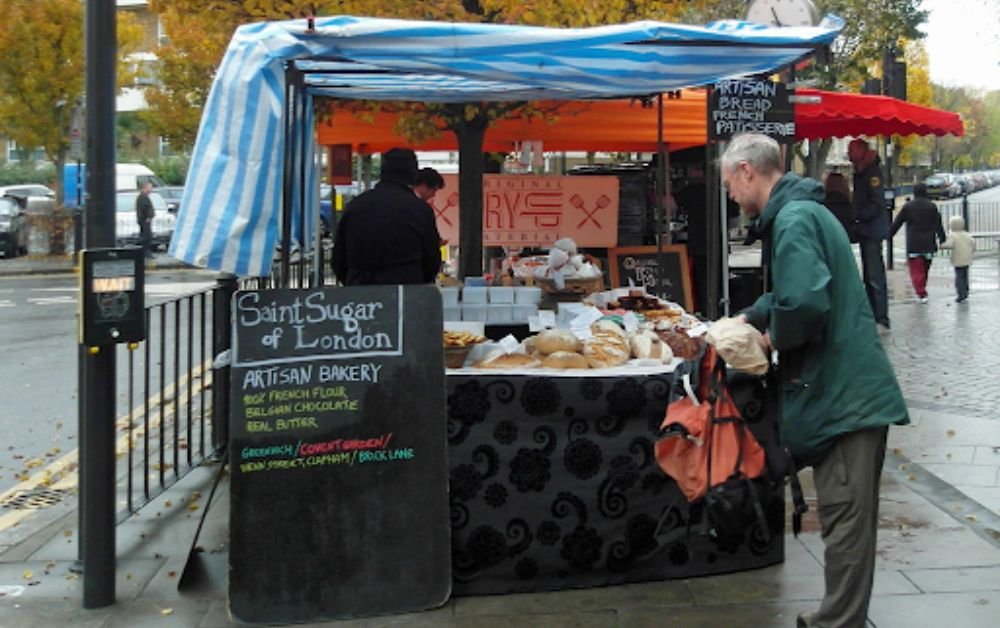
Food tours provide a social and interactive dining experience that is perfect for both solo travelers and groups of friends or family. Sharing a meal is a communal activity, and on food tours, you'll often find yourself dining with fellow participants who share your passion for food. This social aspect fosters connections and camaraderie as you bond over your culinary discoveries. It's an opportunity to swap recommendations, exchange travel stories, and make new friends from different parts of the world. The interactive nature of these tours also allows you to engage with chefs, food vendors, and fellow diners, enhancing the overall enjoyment of your culinary adventure.

Food tours are often accommodating when it comes to food allergies and dietary preferences. Tour organizers understand the importance of catering to a wide range of dietary needs, and they strive to make the experience enjoyable for everyone. Whether you're a vegetarian, vegan, gluten-free, or have specific food allergies, you can usually inform the tour organizers in advance, and they will do their best to tailor the tour to your requirements. This ensures that you can still partake in the culinary adventure without compromising your dietary restrictions. It's a thoughtful aspect of food tours that allows all participants to savor the local flavors with peace of mind.
In the age of social media, food tours offer a treasure trove of Instagram-worthy moments. Each dish you sample, every vibrant market you explore, and the picturesque settings of the dining locations provide ample opportunities for stunning food photography and travel snapshots. Sharing your culinary adventures on social media not only allows you to document your journey but also inspires others to explore new destinations and flavors. The visually appealing nature of food tours makes them a source of envy-inducing photos and unforgettable memories that you can look back on and share with friends and family long after the tour has ended.
Food tours are not just a delightful culinary adventure; they are a passport to a world of flavors, traditions, and unforgettable experiences. Whether you're a seasoned foodie or a curious explorer, these tours offer a unique opportunity to savor the essence of a destination through its cuisine.
From expanding your palate to connecting with locals and gaining insight into a region's culture, food tours provide a feast for the senses and memories that will linger long after the last bite. So, if you're ready to embark on a flavorful journey, don your apron of curiosity and embark on a food tour – your taste buds and wanderlust will thank you!
Studying abroad: the mere mention conjures images of bustling foreign cities, ancient universities, and the promise of adventures that blend learning with global exploration. It's an experience that goes beyond the confines of a traditional classroom, offering a unique blend of academic rigor and life-enriching travel. But what makes studying abroad so transformative, and how can you make the most of this opportunity? Let’s dive into the world of international education and discover how it combines the pursuit of knowledge with the thrill of discovery.

Have you ever wondered why millions of students pack their bags each year to study in a land far from home? The answer lies in the unparalleled mix of high-quality education and the immersion in a new culture. Studying abroad exposes you to diverse teaching methodologies, often in institutions renowned for their academic excellence and innovation. But it's not just about the grades; it's about growing in a setting that challenges and expands your worldview.
Imagine learning Italian in the heart of Rome or delving into international relations in Geneva. These aren’t just academic pursuits; they’re pathways to deep cultural immersion. You learn the local language, engage with the community, and understand global issues from a fresh perspective. It’s an education that textbooks alone cannot provide.
A personalized study plan is your map in this journey. It outlines what you need to learn, when you'll study, and how you'll assess your progress. This doesn't just include academic learning but also developing essential life skills like time management, critical thinking, and effective communication. How will you balance your studies with other responsibilities? How will you keep yourself motivated and on track? A well-thought-out study plan is flexible yet structured, allowing for personal growth while ensuring academic success.
In today's digital age, an array of resources and tools are at your fingertips. From online libraries and educational apps to study groups and tutoring services, these resources can enhance your learning experience. Have you explored which tools might best suit your learning style? Whether it's interactive tutorials, flashcards, or academic journals, integrating these tools into your study plan can make the journey both efficient and enjoyable. Also, don't forget that you can use additional online resources to study while traveling, which can greatly ease the stress of balancing studies and travel. A clear example of such a service is the Edubirdie portal, where you can find a large number of lectures or notes on various topics. You can find literally anything there, from the theory of deliberate play to scientific research in the field of psychology and health.
No journey is meant to be traveled alone. Building a support network of peers, mentors, and educators can provide encouragement, advice, and a sense of community. How will you connect with fellow students or find mentors in your field? Whether through online forums, campus organizations, or study groups, fostering these connections can make the journey less daunting and more rewarding.

Every journey comes with its set of challenges, but it's the perspective you choose that defines the experience. Viewing obstacles as opportunities for growth transforms the journey into an adventure. How will you adapt to setbacks? What strategies will you employ to overcome obstacles? Embracing challenges with resilience and a positive mindset can lead to unexpected discoveries and achievements.
Adopting a growth mindset is key to navigating the educational journey with confidence and curiosity. This means believing that your abilities and intelligence can be developed through dedication and hard work. Are you prepared to step out of your comfort zone, embrace new experiences, and learn from feedback? A growth mindset not only propels you forward academically but also enriches your personal development.
Preparing for the educational journey is not a one-time task but a continuous process of planning, adapting and growing. It's about setting your sights on the horizon, armed with a clear vision, a well-charted map, and a resilient spirit. By understanding the importance of preparation, crafting a personalized study plan, leveraging resources, and embracing challenges, you're not just embarking on an educational journey; you're setting the stage for a lifelong adventure of learning and discovery. Remember, the journey itself is just as important as the destination. So, take a deep breath, embrace the excitement, and prepare to chart your own course. The world of knowledge awaits, and the journey you're about to undertake is nothing short of extraordinary.
One of the most compelling reasons to study abroad is the opportunity to take courses not available at your home institution. Whether it’s specialized subjects or unique fieldwork opportunities, international study programs offer a breadth of education that can significantly enhance your academic portfolio.
But it’s not just your intellect that grows; your personal development takes a leap too. Navigating life in a foreign country fosters independence, adaptability, and resilience. From managing everyday tasks in a new language to handling unforeseen challenges, the experience molds you into a more capable and confident individual.
Studying abroad places you in a melting pot of cultures, connecting you with people from all corners of the globe. These aren’t just classmates; they’re future leaders, innovators, and lifelong friends. The networks you build can open doors to international careers, collaborations, and a deeper understanding of global issues.
The friendships forged in the unique environment of international study are often deeper and more enduring. Shared experiences, from exploring local landmarks to celebrating traditional festivals, create bonds that last a lifetime. These connections enrich your life, providing a global support system and a reason to travel and explore even more.
Studying abroad is not without its challenges. Homesickness, cultural adjustments, and navigating academic expectations in a new environment can test your resolve. But it’s in overcoming these hurdles that the experience becomes truly transformative. Each challenge conquered is a step toward becoming a more adaptable and resilient person.
There’s an undeniable thrill in finding your footing in a new country. The success of managing your studies, social life, and daily logistics in an unfamiliar environment is a significant personal achievement. This independence is empowering, instilling a confidence that permeates all aspects of your life.
Studying abroad is more than an academic endeavor; it’s a journey of personal discovery and global exploration. It challenges you, changes you, and ultimately enriches your life in ways you never imagined. By combining education with world exploration, you gain not just knowledge but a broadened perspective, lifelong friendships, and memories that last a lifetime. So, are you ready to embark on this transformative adventure?
Travel is more than just a way to escape the everyday; it's a journey into the heart of new cultures, histories, and perspectives. Gone are the days when vacations were solely about lounging on beaches and snapping photos of famous landmarks. Today, a growing number of adventurers are turning their trips into educational odysseys, seeking to return home not just refreshed, but enriched. But how does one transform a typical sightseeing trip into a profound insight-seeking journey? Let's dive into the art of making travel a deeply educational experience.

The first step in transforming your travel into an educational odyssey is adopting the mindset of a perpetual learner. This means looking beyond the surface of the destinations you visit. But what does it mean to look beyond the surface? Imagine you're standing in front of the Colosseum in Rome. Instead of just taking a photo, you dive into its history, understanding the engineering marvels of ancient Rome, the societal norms of the time, and the evolution of architectural styles. This deeper exploration turns a simple visit into a lesson in history, architecture, and sociology.
Curiosity is the compass that leads travelers to deeper insights. Don't hesitate to ask questions, whether it's querying locals about their daily lives or discussing historical contexts with tour guides. Each answer adds a layer to your understanding of the place, transforming every encounter into a learning opportunity.
In the digital age, technology is a powerful ally in transforming travel into an educational journey. Various apps and online platforms offer detailed histories, cultural insights, and language lessons, making it easier than ever to deepen your knowledge on the go. Before stepping foot in your next destination, download some educational apps, bookmark insightful articles, and maybe even follow a few local influencers or cultural guides on social media. It will also not be superfluous to bookmark a more professional service for creating scientific papers such as papersowl.com it can be an indispensable assistant.
Even before you travel, you can start your educational journey through virtual tours and podcasts. These resources can offer a wealth of information on your destination's history, art, and culture, setting the stage for a more insightful visit. By the time you arrive, you'll have a richer context for the sights you see, making each experience more meaningful.
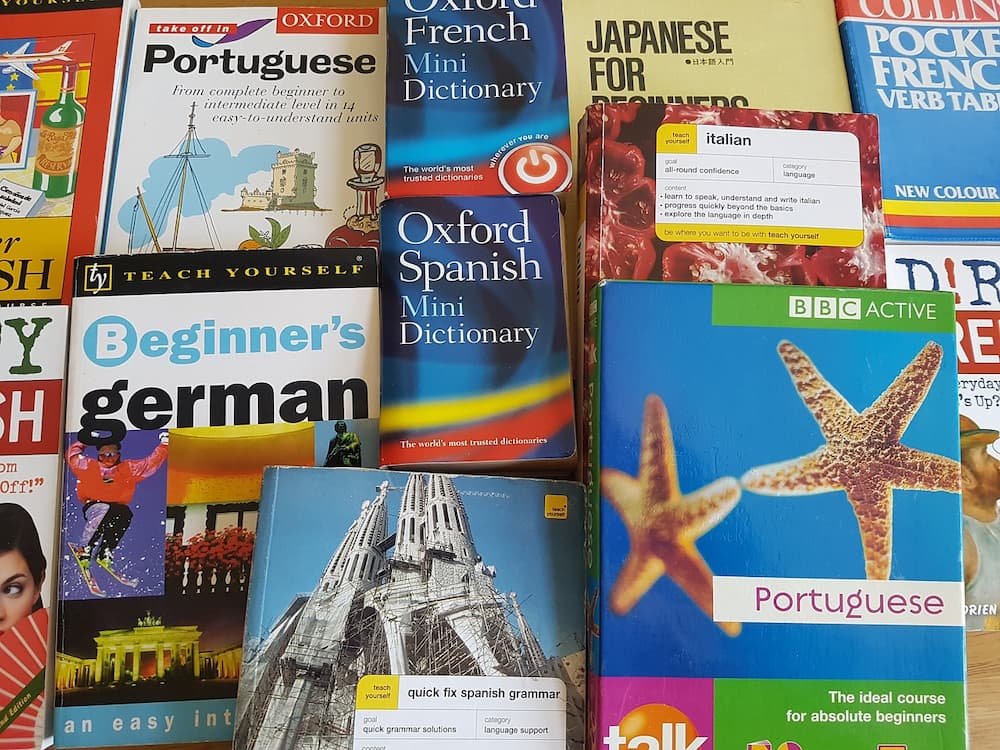
The United Kingdom, with its centuries-old universities like Oxford and Cambridge, stands as a beacon of academic excellence. But what makes the UK truly stand out for study travel?
From literature to science, the UK's educational institutions offer a wide range of courses. Their approach to education emphasizes critical thinking and creativity, preparing students for global challenges.
Canada is renowned for its friendly environment and multicultural society. This makes it an ideal destination for international students seeking a welcoming and inclusive study experience.
Canadian universities are celebrated for their research innovations and high academic standards. Whether technology, health sciences, or environmental studies, Canada provides cutting-edge educational programs.
Australia's universities rank among the world's best, offering a relaxed yet rigorous academic environment. The country's emphasis on work-life balance makes it perfect for those looking to combine studies with exploration.
Australia is not just about quality education; it's an adventurer's paradise. From the Great Barrier Reef to the Outback, students can explore a diverse range of natural wonders.
Japan is at the forefront of technology and innovation, making it an exciting destination for students interested in engineering, technology, and science.
Studying in Japan offers a unique opportunity to immerse oneself in a culture that beautifully blends ancient traditions with cutting-edge modernity.
One of Germany's most attractive features for international students is the lack of tuition fees at public universities, combined with high-quality education, particularly in engineering and technology.
Germany's historical sites, from Berlin's Brandenburg Gate to Munich's Oktoberfest, provide a vibrant backdrop to an educational journey.
The Netherlands is known for its innovative and student-centered teaching approach, offering numerous English-taught programs in a country famous for its high proficiency in English.
The Netherlands offers a unique lifestyle, with its bicycle-friendly cities and open-minded culture, making it an appealing choice for students from around the globe.
To truly understand a place, you must experience it like a local. This could mean staying in homestays rather than hotels, participating in traditional festivals, or even learning a few phrases in the local language. Immersing yourself in the local way of life allows you to see the world from a new perspective, fostering empathy and a deeper appreciation for diverse cultures.
Food is a delicious gateway to culture. By exploring local cuisines, you're not just treating your taste buds; you're digesting the history, geography, and sociology of a place. Each dish tells a story of migration, trade, and innovation. So, the next time you're sampling a local delicacy, remember, you're not just eating; you're learning.
Documenting your travels is not just about preserving memories; it's a tool for reflection and learning. By jotting down observations, thoughts, and lessons learned daily, you're creating a personal travelogue that deepens your understanding and appreciation of your experiences. This journal can become a valuable resource for future travels or simply a way to revisit your educational journey from the comfort of your home.
Sharing your travel experiences through blogging, social media, or even informal chats can not only inspire others but also deepen your own insights. The act of articulating your learnings helps cement them in your memory, and the feedback from others can offer new perspectives you hadn't considered.
Transforming travel from sightseeing to insight-seeking is about more than just visiting new places; it's about becoming a student of the world. By embracing the mindset of a learner, immersing yourself in local cultures, leveraging technology, and reflecting on your experiences, you turn each journey into an educational odyssey. The beauty of this approach is that it not only enriches your travels but also transforms you, the traveler, into a bridge between cultures, a storyteller of the world's endless narratives, and, most importantly, a lifelong learner. So, the next time you pack your bags, ask yourself: Am I ready not just to see the world, but to understand it?
Skiing is a popular getaway activity that takes playing with snow to a whole new level. According to a report on the ski and snowboarding industry by Forbes, 10.5 million skiers visited resorts in the United States from 2020-2021, and more than one million of those visitors were first-timers. Whether it’s in Aspen or Breckenridge, skiing is perfect for thrill seekers and adrenaline junkies.

Before planning your next skiing adventure, there are some things you should consider. In our previous article about snow forecasting, we mentioned how areas affected by warmer temperatures can have less snowfall, which could affect your skiing experience. Monitoring snow forecasts helps you plan how you can make the most of your time on the slopes — and whether it’s safe to do so. Skiing is an extreme sport that can also result in injuries, so paying close attention to the weather and wearing the right gear is important to protect you from harm. Here are some tips for picking the right snow gear for your next ski trip.
Your hands help you stabilize movement with your poles when skiing, and it can be pretty distracting and difficult to navigate the slopes if they're cold or lack grip. To ensure your hands are at their best during your ski trip, remember to bring gloves that provide adequate insulation to keep them warm. Waterproofing on your gloves is also crucial, as it helps your hands keep dry in the snow. Don’t forget to test if the gloves provide a good grip on your ski poles and allow your fingers to move easily as well. The North Face’s Etip Recycled Gloves are a great find if you’re looking for durable gloves that provide warmth and a good grip on a chilly trip to the mountains.

Wearing snow goggles is important when you’re high up in the mountains to ski, especially because your eyes are at risk of exposure to too much ultraviolet (UV) light from the sun, which could lead to vision problems such as photokeratitis or snow blindness. The ski goggles from Oakley carry the brand’s patented Plutonite lens material, which provides 100% UV protection and is included in their Flight Tracker and Target Line models. These goggles also have the Flexible O Matter chassis that allows for a comfortable fit to your face and meets the American National Standards Institute’s impact requirements. Using quality goggles during a ski trip is crucial for vision protection and helps you avoid any unfortunate trips to your eye doctor.
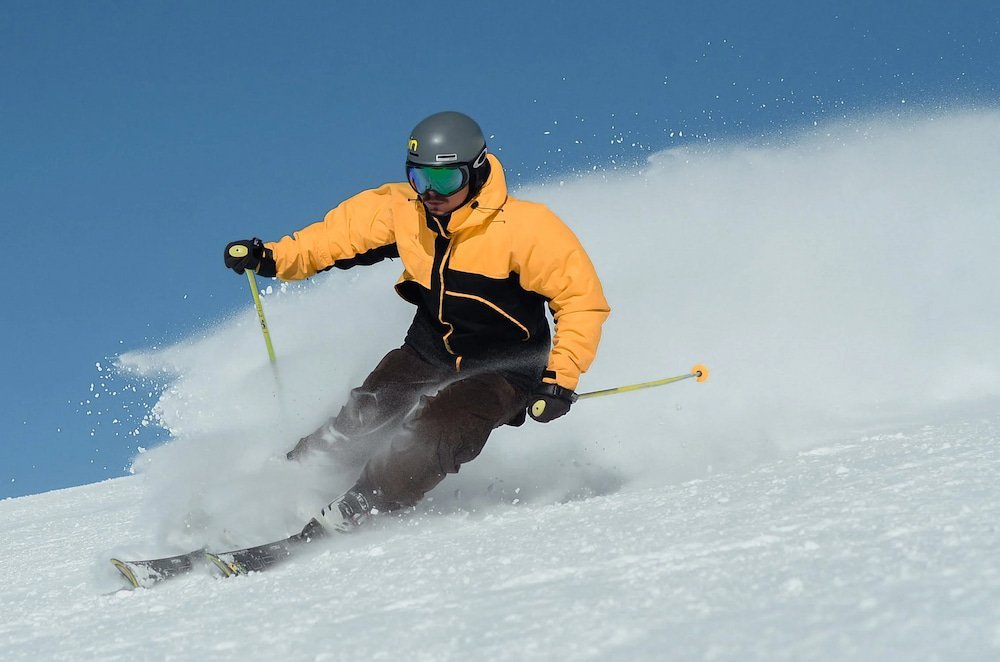
Wearing a helmet during a ski trip is necessary for preventing serious head injuries that may occur when you fall or hit obstacles. A study on snow sports injuries found that incidents of head or neck injuries were highest in freestyle skiing, which is why a good helmet is important to prevent fatal fall damage when you’re up in the mountains. Choose a helmet with a hard outer shell and a comfortable fit to help you have a smooth and safe skiing experience. REI Co-op’s Smith Method Mips Round Contour snow helmet is perfect for your trip, especially since it meets American standards for snow helmet certification and is lightweight with impact protection.
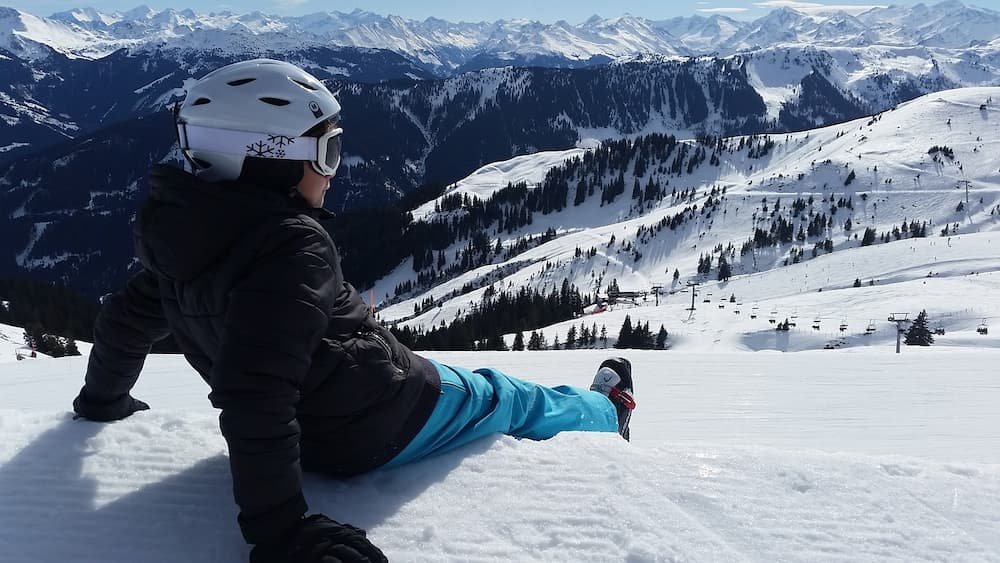
Ski boots connect your body to your skis, so you need a pair that enhances your balance, performance, and enjoyment to avoid any injuries. Make sure you have boots with a hard outer shell to avoid risks of ankle injuries and a soft inner layer to provide warmth and comfort for your feet. You can try the Radical Pro ski boots from Dynafit, which are light and comfortable and have a Hoji Lock system that allows you to use them comfortably when you’re climbing or descending.

Using the right gear for your next ski trip prevents possible injuries and enhances your overall experience and performance. Be sure to follow these tips for a safe and comfortable skiing adventure.
As you prepare for the skiing season, understanding how snow forecasting impacts the sport is crucial. Different regions rely on accurate predictions to shape the ski and snowboard industry's operations, from opening day to the last run of the season. Snowfall predictions are essential because they dictate not only the quality and quantity of snow at resorts but also safety measures and resource allocation. As an example, you can find accurate snow forecasts from Piste Pro who offer valuable insights, ensuring enthusiasts like you have the best experience while hitting the slopes.

Weather patterns such as El Niño can cause variations in temperatures and precipitation, affecting snow conditions and consequently, the ski seasons in various regions. For instance, in areas where El Niño results in warmer sea surface temperatures, you might expect to encounter less snowfall, influencing the duration and enjoyment of your skiing activities. On the other hand, more frigid conditions lead to snowstorms that could extend the season and provide fresh powder. Resort operations must adapt to these forecasts, impacting everything from staffing to the grooming of trails.
The ability to accurately forecast snowfall is critical for ski resort operations, affecting everything from daily management to long-term planning. Advanced forecasting techniques and technologies enable resorts to prepare for the snow season effectively, ensuring economic stability and safety for visitors.
In the realm of winter sports, meteorologists use sophisticated models to predict snowfall, which is pivotal for ski resorts to manage their resources. The snow forecasts are based on various climate data including temperature, humidity, and atmospheric pressure. These forecasts inform resort operators about the thickness of the snowpack and expected precipitation levels. Resorts rely on such technological advancements to make decisions ranging from snow grooming to avalanche control measures.
When a promising snow forecast emerges, ski resorts must respond swiftly. They adjust their operations, deploying snow-making equipment if natural snowfall is predicted to be insufficient, and strategize lift operations to accommodate the influx of skiers. Employing forecasts from Piste Pro, resorts can obtain up-to-date information, allowing for real-time decisions that can enhance the skiing experience while ensuring the environment remains protected.
The financial health of ski resorts is intimately tied to accurate snow predictions. When meteorologists provide reliable forecasts, resorts can better schedule staff, manage ski lifts, and prepare hospitality services to match visitor demand. Accurate forecasts also help mitigate financial risks associated with unpredictable weather patterns, securing the economic viability of the resorts.
Understanding the complexity of snow forecasting is critical to anticipating how your ski season may unfold. Variations in climate patterns significantly affect snowfall and ski seasons in different regions.
In North America, particularly in the United States and Canada, ski seasons are deeply influenced by local weather systems. The National Weather Service (NOAA) monitors these systems, providing forecasts that help resorts manage and predict the skiing conditions. For example, in the Rocky Mountains, you can expect a longer ski season with consistent snowfall attributed to the continental climate and elevation.
European ski resorts are largely influenced by the complex weather systems of the Alps. Snow forecasts in these regions involve monitoring alpine-specific patterns, which can lead to varying snow conditions across short distances. In recent years, studies such as "Snow Moving to Higher Elevations" discuss the observable trend of snowlines moving upward, indicative of changing climatic conditions.
Climate change is reshaping ski seasons around the globe, as you can see in shifted patterns and trends in snowfall. Research such as "A mechanism for regional variations in snowpack melt" emphasizes the delayed snowpack melt, altering the timing of snow availability for skiing. Global warming introduces greater variability, influencing phenomena like El Niño and La Niña, which in turn affect regional ski conditions.
Your understanding of snow forecasting is crucial to navigating the ski season. Climate projections indicate a decrease in the length of the skiing season at various ski resorts, such as those in Aspen, due to climate change. Projected climate change impacts skiing. In regions of high elevation, you might notice less significant changes in snow-water equivalent (SWE) midseason Impact of Global Warming on Snow in Ski Areas. Recognizing these patterns allows you to plan your ski trips more effectively. As you prepare for the skiing season, keep informed about current climate trends and their impact on snow conditions to make the most of your time on the slopes.
